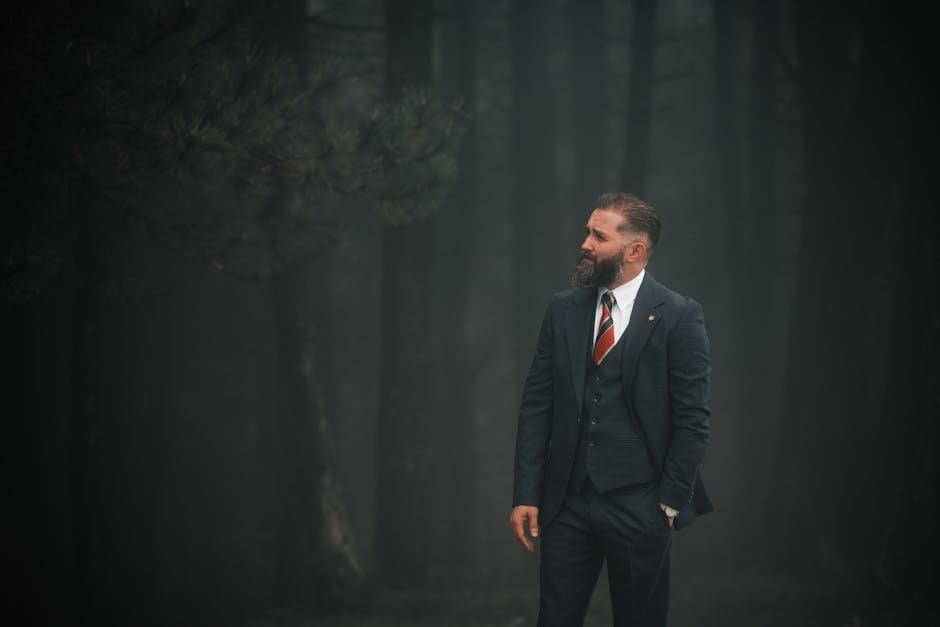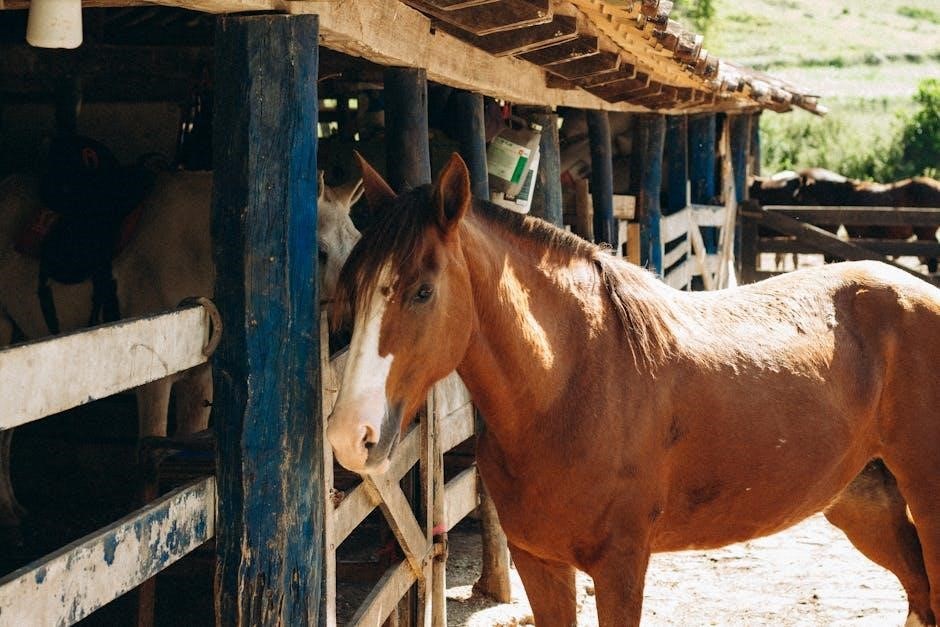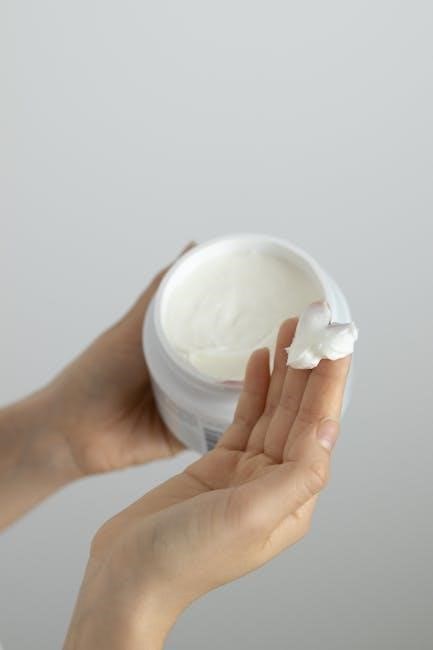Understanding PWD Coat Types
The Portuguese Water Dog has two distinct coat types: curly and wavy. The curly coat is compact with cylindrical curls, while the wavy coat is loose and flowing.
Both coat types require regular grooming to maintain their natural texture and prevent matting. Understanding these differences is essential for proper care and styling of your PWD.
1.1. Curly Coat Characteristics
The curly coat of the Portuguese Water Dog is characterized by compact, cylindrical curls that lie close to the body. These curls are tightly wound and form a uniform texture across the dog’s skin. The coat is somewhat lusterless compared to other breeds and requires consistent grooming to prevent matting. Regular brushing is essential to maintain the integrity of the curls and ensure they remain well-defined. The curly coat is naturally water-resistant, making it ideal for swimming, but it sheds minimally, which is beneficial for those with allergies. Proper care ensures the curls retain their natural beauty and functionality.
1.2. Wavy Coat Characteristics
The wavy coat of the Portuguese Water Dog is characterized by loose, flowing waves that give the dog a natural, tousled appearance. This coat type has a lustrous sheen and a softer texture compared to the curly coat. It requires regular grooming to prevent matting and tangling, especially around the ears and legs. The wavy coat is less dense than the curly variety, making it slightly easier to maintain. Weekly brushing is essential to keep the waves defined and prevent them from becoming frizzy. While the wavy coat sheds minimally, it is more prone to frizz in humid environments, requiring extra care to maintain its texture and appearance.
Essential Grooming Tasks
Regular brushing, bathing, and nail trimming are crucial for maintaining the PWD’s coat and overall health. These tasks prevent matting and keep the dog clean and comfortable.
Consistent grooming also includes dental care and ear cleaning to avoid infections. A well-groomed PWD not only looks great but also stays healthy and happy long-term.
2.1. Brushing and Combing Techniques
Brushing and combing are vital for maintaining the PWD’s coat. Use a slicker brush to remove tangles and mats, while a wide-tooth comb gently detangles curls and waves.
Start from the head, working down to the tail. Be gentle around sensitive areas, like the ears and armpits. Regular brushing prevents matting and keeps the coat healthy.
For curly coats, use a pin brush to define curls without breaking them. Wavy coats benefit from a bristle brush to enhance natural flow. Daily brushing ensures a well-maintained, tangle-free coat.
2.2. Bathing and Drying Methods
Bathing is essential for maintaining the PWD’s coat cleanliness. Use a mild dog shampoo, avoiding harsh chemicals that can strip natural oils. For curly coats, conditioner helps detangle curls, while wavy coats benefit from a light conditioner to enhance texture. Rinse thoroughly to remove all soap residue, especially after swimming, to eliminate salt, chlorine, or dirt.
After bathing, gently pat dry with a microfiber towel. For curly coats, allow air-drying to preserve curl definition. Wavy coats can be dried with a low-setting blow dryer. Regular post-swim rinses are crucial to prevent skin irritation and keep the coat healthy and shiny.

Trimming and Shaping
Trimming and shaping are crucial for maintaining the Portuguese Water Dog’s distinctive appearance. Regular trims prevent overgrowth and ensure a balanced, elegant look, enhancing natural contours.
3.1. Ear Trimming Guidelines
Ear trimming for Portuguese Water Dogs involves carefully scissoring to blend the ear hair with the head’s fur. Avoid cutting too short, as this can cause discomfort or infections. Use thinning shears for a natural look, ensuring the ears remain balanced with the dog’s facial structure. Regular trimming prevents matting and keeps ears clean. Always trim cautiously, following the ear’s shape to maintain the breed’s signature style. Proper technique is essential to avoid irritation and ensure the dog’s ears stay healthy and visually appealing. This step requires precision and a steady hand to achieve the desired aesthetic and functionality.
3.2. Face and Head Shaping
Face and head shaping for Portuguese Water Dogs involves creating a balanced, natural look. Use thinning shears to blend fur around the eyes and muzzle, ensuring a soft, rounded appearance. Avoid cutting too close to the eyes to prevent irritation. The muzzle should be trimmed to maintain its wedge shape, while the jawline is kept clean for definition. Regular touch-ups are needed to prevent overgrowth and maintain the breed’s distinctive features. Proper shaping enhances the dog’s facial expression and overall aesthetic, making it a crucial part of their grooming routine. Precision is key to achieve a harmonious and stylish outcome.

Nail and Dental Care
Nail and dental care are crucial for PWDs. Trim nails to prevent overgrowth and brush teeth regularly to avoid tartar buildup, ensuring overall health.
4.1. Nail Trimming Importance
Nail trimming is vital for Portuguese Water Dogs to prevent overgrowth, which can cause discomfort, infections, or difficulty walking. Overgrown nails may curve into the paw pads, leading to pain and mobility issues. Regular trimming helps maintain proper paw alignment and gait. Additionally, it prevents accidental scratches and injuries during play or activity. PWDs, being active and often swimming, may wear down their nails naturally, but periodic checks and trims are still necessary. Neglecting nail care can result in health complications, emphasizing the importance of incorporating nail trimming into their grooming routine. Consult a professional if unsure about the process or frequency.
4.2. Teeth Brushing Techniques
Regular teeth brushing is crucial for maintaining your Portuguese Water Dog’s oral health; Use a dog-specific toothbrush and toothpaste, as human products can be harmful. Start by gently lifting your dog’s upper lip and brushing their teeth in a circular motion, focusing on the areas where plaque accumulates, particularly on the back teeth. Begin with short sessions and gradually increase duration to help your PWD become comfortable with the process. Ideally, brush your dog’s teeth daily, but at least several times a week. This practice helps prevent tartar buildup, bad breath, and gum disease, ensuring a healthy, happy smile for your PWD.

Popular PWD Haircuts
Portuguese Water Dogs often sport the Retriever Cut or Sporting Cut. These styles highlight their natural beauty while maintaining functionality, keeping their coat neat and manageable for an active lifestyle.
5.1. Retriever Cut
The Retriever Cut is a popular choice for Portuguese Water Dogs, emphasizing a natural, even coat length of about one inch. This style follows the body’s contour, blending seamlessly from head to tail. It minimizes bulk, making it ideal for active dogs. The ears are trimmed to align with the head, and the face is rounded for a soft look. This cut is both functional and aesthetically pleasing, ensuring the dog remains comfortable while maintaining its breed-specific charm. Regular touch-ups are needed to keep the coat uniform and prevent uneven growth.
5.2. Sporting Cut
The Sporting Cut is designed to highlight the Portuguese Water Dog’s athletic build while maintaining a polished appearance. This cut features a shorter coat length, typically around 1-1.5 inches, with moderate layering to create movement and flow. The ears are trimmed to a rounded tip, and the tail is neatly feathered but not overly long. The face is slightly rounded, blending naturally into the skull. This cut emphasizes the breed’s muscular structure and is ideal for active or show dogs. It balances a sporty look with elegance, making it a versatile choice for owners seeking both style and functionality.

Maintenance and Tips
Regular grooming sessions are crucial to keep your PWD clean and healthy. Establish a consistent schedule to prevent matting and maintain coat health.
Post-swim care is essential. Rinse thoroughly with clean water to remove salt and chlorine, then dry completely to prevent skin irritation and infections.
6.1. Regular Grooming Schedule
A consistent grooming schedule is vital for maintaining your PWD’s health and appearance. Brush your dog 2-3 times a week to prevent matting and tangling, especially in curly coats. Trim nails monthly to avoid overgrowth, which can cause discomfort. Clean ears weekly to prevent infections, and inspect for signs of irritation. Bathe every 4-6 weeks or after swimming to remove dirt and chemicals. Regular grooming helps detect skin issues early and strengthens your bond with your dog. Start grooming sessions early to help your PWD become comfortable with the process.
6.2. Post-Swim Care Routine
After swimming, rinse your PWD thoroughly with clean water to remove salt, chlorine, and dirt. Gently pat dry, paying attention to ears and skin folds to prevent moisture buildup. Inspect for debris or tangles and comb them out. If needed, bathe with a mild shampoo and conditioner to maintain coat health. Regular post-swim care prevents skin irritation and keeps their coat clean and healthy.
